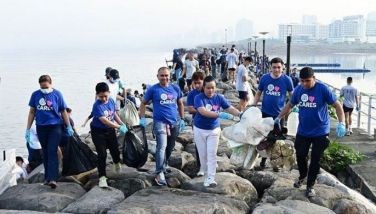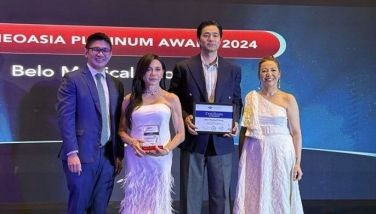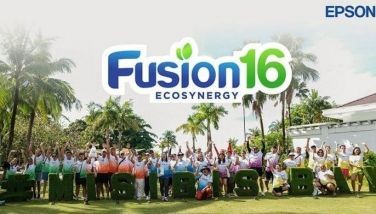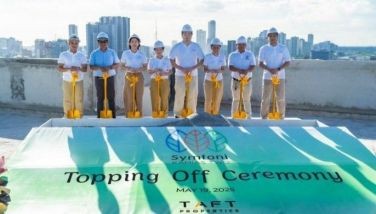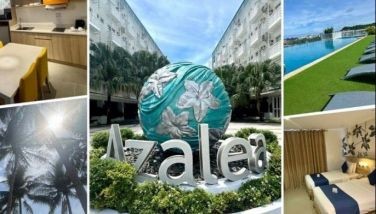Tourism That Works For The Earth
The country aims to welcome over three million tourists this year. The influx of foreign visitors has led to a construction boom in prime destinations, but development also has serious impact on the environment.
The Sustainable Coastal Tourism in
“The tourists still keep coming and that’s what matters to them, but you have to educate them, remind them that it’s their livelihood, too,” says environment advocate Grace Favila of her experience with hotel and resort owners and local communities that were initially hesitant to get involved in a project intended to reduce the impact of tourism on the country’s coastal ecosystems.
Favila, whose seven-year stint as executive director of the Philippine Business for the Environment and as previous adviser to former Environment Secretary Elisea Gozon have provided her with ample knowledge on environmental management, says that, once explained, the people liken the project to “preventing another Boracay,” referring to how the world-renowned tourist destination in the Visayas was recently placed by the government under a construction moratorium, as uncontrolled development resulted in serious negative impact on the island.
While being popular is proving to be a curse for Boracay, it is not the only tourist spot that is experiencing environmental problems.
The “tourism value of marine resources” in all six coastal sites is abundant,
It’s a daunting task, but Favila points out that the targets are very clear and the areas covering the project specific.
In
Using the common reed to treat pollutants in wastewater,
With an engineered reed bed system, the overflow from the septic tank, which may lead to the contamination of coastal waters, is filtered and stabilized and with the use of the common reed, locally known as tambo, pollutants from the wastewater are absorbed by its roots, which also provide oxygen to the beneficial bacteria in the final treatment stage before the water goes out into the sea.
“There are other technologies, although having a reed bed is the best option since it has low operating and maintenance cost and it’s all natural. You don’t need chemicals but the trade-off is that you must have land,” Favila says.
Land space, she notes, is something that’s lacking in Puerto Galera given that tourist areas are already packed.
Yet,
In
“The system has become a model that small establishments in neighboring municipalities visit,” says Favila in a report.
In the
Over-reliance on the septic tank system as the catch-all solution to sanitation problems in the country,
Even while it is well-meaning,
“But overall, we found the people to be open” to the project, says Favila.
The toughest part for
“You can just clean up, and we can even bring in people to clean up but that’s not going to work because when we leave, it would go back to how it was, probably even dirtier, so it’s really education, telling the people to be aware. That is something that we are very proud of accomplishing,” Favila tells STAR- week.
Getting the people to act is tough enough, but even tougher is when money is involved.
In Favila’s report, she cites that in Moalboal, it was an “uphill climb” for SCOTIA to get the support of dive shop operators and resort owners for the passage of the environmental users’ fee ordinance, or EUF, a “mechanism to sustain the management” of environmental resources.
There, too, was lukewarm support from the local government, but eventually the stakeholders warmed up to the idea which, after all, would give more protection to their coastal areas.
The EUF system, Favila explains, provides for the sharing of the revenue by the LGU and with people’s organizations that protect the coast like fishermen’s associations and the coastal barangays.
“In seven months, they managed to raise P1 million. We even project it to reach P5 million,” Favila says, pointing out that divers are more than willing to pay the fee for they know it is for the protection of the marine life.
In almost all project sites, she says the LGUs have increased their budget to better manage the environmental impacts of specific human activities like in solid waste management.
In Lemery, Batangas, where solid waste is a serious problem given its booming population that now stands at 120,000 and worse, the town has yet to have a sanitary landfill, the Sangguniang Barangay was able to increase its budget to P9.6 million in 2008 from P3.5 million this year, which Favila says, “indicates commitment to build a sanitary landfill” even as “poor social acceptance” has hindered the plan in the past two years.
“You have to get a core of committed leaders like the environmental officer or sanitation officer of local governments. We start with the barangay because they are smaller and they can talk to the people,” Favila explains.
The people of El Nido were cited by
“In one of the barangays there, the captain and the Sangguinang Barangay members passed an ordinance on segregation and collection. They teach how to segregate, they demonstrate it to the people and that went on for about a week. After that, they expect the residents to do it themselves to avoid being penalized,” she says.
The solid waste reduction targets in El Nido have been surpassed, according to Favila. The local government of this fourth class municipality and marine reserve park at the northernmost tip of mainland Palawan has also steadily increased its solid waste management budget from a mere P50,000 a year when SCOTIA started in 2004 to a whopping P3.5 million this year.
Notwithstanding the setbacks,
“When we leave, we know the system is in place,” she says.
Nature does have a way of healing itself, but sometimes there is a dangerous payback for the abuse it has endured from humans and their activities. This is one way by which humans can evenout the impact.
- Latest
- Trending







